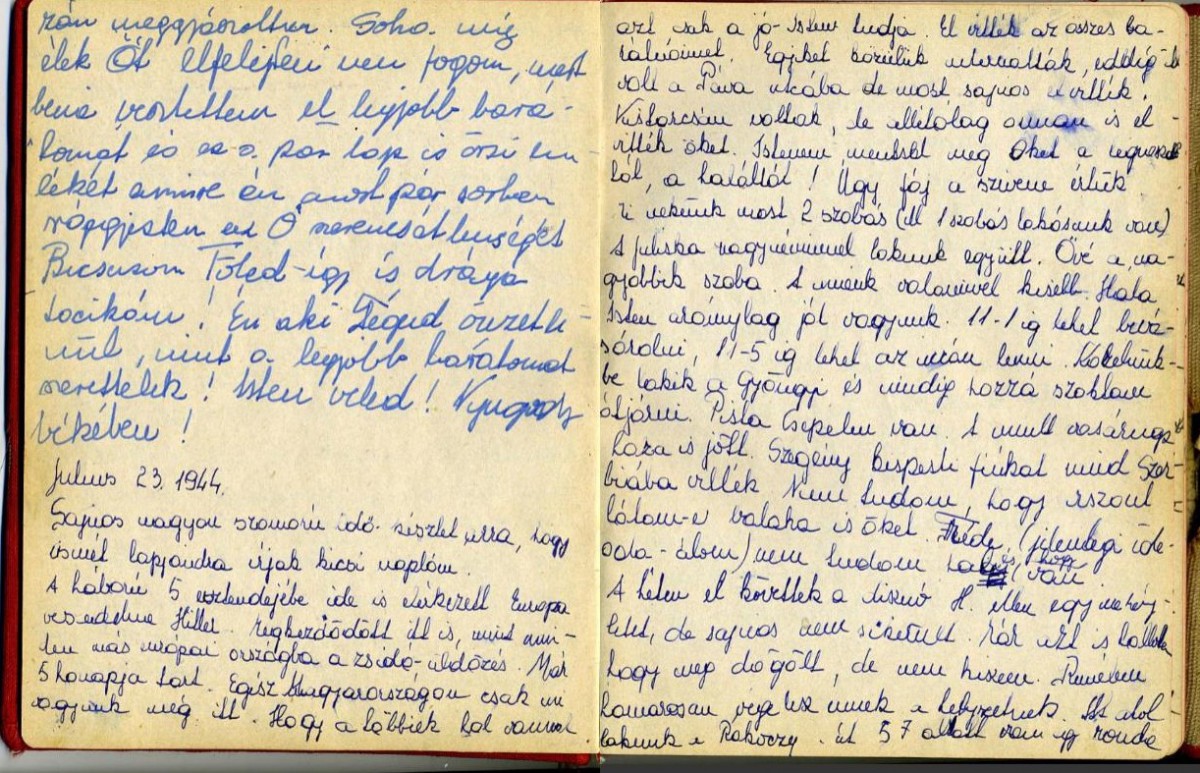
Komárom and its surroundings
The Hungarian gendarmerie deported 5463 people to Auschwitz-Birkenau from Komárom in the summer of 1944, including 1000 to 1500 children. Most of them were murdered immediately upon arrival by the Nazis.

The Hungarian gendarmerie deported 5463 people to Auschwitz-Birkenau from Komárom in the summer of 1944, including 1000 to 1500 children. Most of them were murdered immediately upon arrival by the Nazis.

Lilla Ecséri was 16 years old when she survived the Holocaust. She was hiding in Budapest, and often she just barely escaped death. All through her ordeal she was keeping her diary.

Many of those Hungarian children and teenagers who survived the selection upon arrival at Birkenau, after the registration and a brief quarantine period were transported to various camps of the Auschwitz-complex. They were to perform slave labor for the SS.

After the German occupation of Hungary, the experiences of Jewish children and teenagers were determined by three developments in the ensuing three weeks. The school year was terminated abruptly, the yellow stars had to be patched and adults seemed helpless and distressed.

Like adults, children were also unaware of what awaited them in the ghettos and after deportations. At the same time however, pieces of information they did acquire was often surprisingly accurate.

Éva Heyman was born in Nagyvárad (Oradea) in 1931. Her great grandfather, Sándor Rosenberg, was a reputed member of the Neologue stream of the Hungarian Jewish community; her grandfather was the scholar and rabbi, Lipót Kecskeméti. Éva’s grandfather worked as a pharmacist in Nagyvárad. The pharmacy was first confiscated in 1919, then by the Communist […]

From Auschwitz, the Hungarian child and adult slaves were scattered in hundreds of concentration, labor and forced labor camps, plants and factories all across Europe. Performing slave labor tens of thousands of them died of starving, diseases and brutal treatment by the perpetrators from KL Riga (Lettland) and KL Stutthof (Poland) in the north to KL Natzweiler in Alsace-Lorraine, from Mauthausen in Austria to KL Buchenwald and Sachsenhausen in Germany. Further thousands were taken by the Nazis to the subcamp system of the nearby KL Gross-Rosen, Flossenbürg and Dachau in Bavaria or disappeared in KL Ravensbrück, the women’s camp.